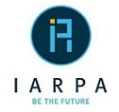New funding opportunity from IARPA — introducing the SILMARILS program
 On April 2, the Inteligence Advanced Research Projects Activity (IARPA), Office of Smart Collection released a broad agency announcement for Standoff ILluminator for Measuring Absorbance and Reflectance Infrared Light Signatures (SILMARILS) Office of Smart Collection (IARPA-BAA-15-07). The proposal due date for the initial round of selections is 5:00 pm Eastern time May 18, 2015.
On April 2, the Inteligence Advanced Research Projects Activity (IARPA), Office of Smart Collection released a broad agency announcement for Standoff ILluminator for Measuring Absorbance and Reflectance Infrared Light Signatures (SILMARILS) Office of Smart Collection (IARPA-BAA-15-07). The proposal due date for the initial round of selections is 5:00 pm Eastern time May 18, 2015.
Standoff chemical detection is a ubiquitous need across the Intelligence Community (IC) for applications ranging from forensic crime scene analysis to border and facility protection to stockpile and production monitoring. However, current systems do not provide the sensitivity, specificity, and low false-alarm rates that are needed to enable effective use in a cluttered, realworld environment.
The SILMARILS program aims to develop a portable system for real-time standoff detection and identification of trace chemical residues on surfaces using active infrared spectroscopy at a 30 meter range. Program goals include: high chemical sensitivity and specificity across a broad range of target classes; effective operation in a real-world environment accounting for issues such as gas phase and surface-adsorbed clutter, varying substrates, temperature, humidity, indoor/outdoor background light; a system that is eye-safe and has a visually unobservable illumination beam; human-portable size and power draw commensurate with limited-duration battery operation; and a rapid scan rate.
The key overarching objective of the SILMARILS program is to not just develop a spectrometer that can produce high-resolution infrared spectra in the laboratory, but to develop a fully integrated system that can identify target chemicals at mission-relevant concentrations in the field with realworld clutter and background. This objective is envisioned to be accomplished through the integrated development of physical spectrometer hardware and detection and discrimination algorithms.
Successful offerors must propose a multidisciplinary team that will address all aspects of the program. No partial solutions or pure technology development proposals will be funded. Primary chemical classes and specific representative examples that are of interest in the SILMARILS program include, but are not limited to:
Explosives: Nitro-based compounds such as TNT and RDX, newer formulations such as acetone peroxide, and home-made explosives such as fertilizer bombs.
Chemical weapons and poisonous or toxic chemicals: Chemical weapons such as sarin or tabun, newer non-traditional agents, and toxic chemicals that may be intentionally or unintentionally released such as hydrogen cyanide or ammonia gas.
Narcotics: Illicit drugs such as cocaine, heroin, or methamphetamine, or legal but abused drugs such as Vicodin or hydrocodone. Secondary targets include compounds associated with the manufacture and deployment of biological agents and nuclear materials. Although the SILMARILS program will not be able to unequivocally detect these species directly, the overall chemical signatures of bioagent weaponization or nuclear enrichment are distinctive.
The SILMARILS program proposes to bring a simultaneous high-resolution and high-sensitivity IR spectroscopy capability to the field.
Full information is available here.
Source: FedBizOpps








